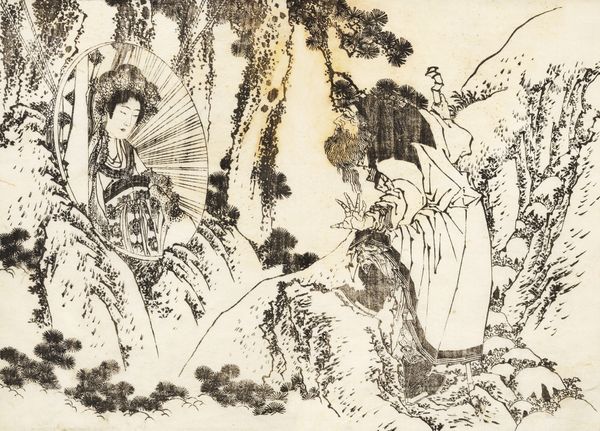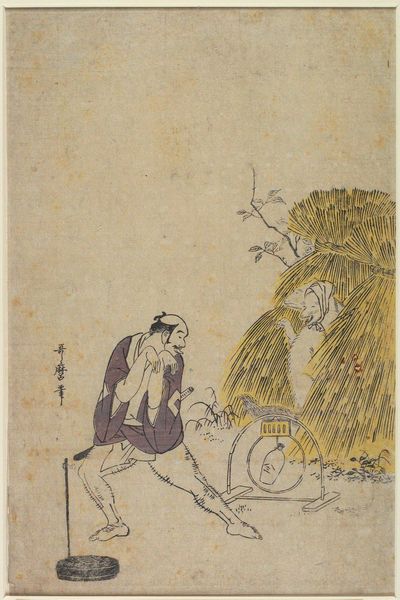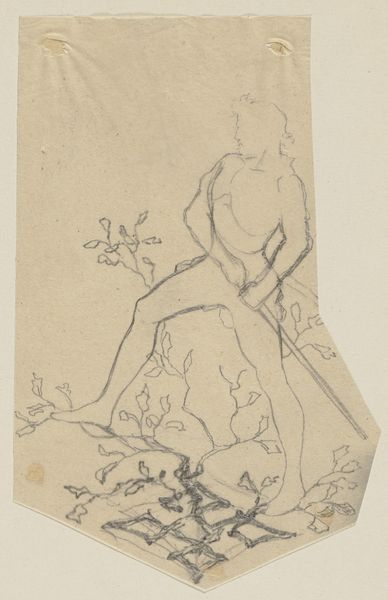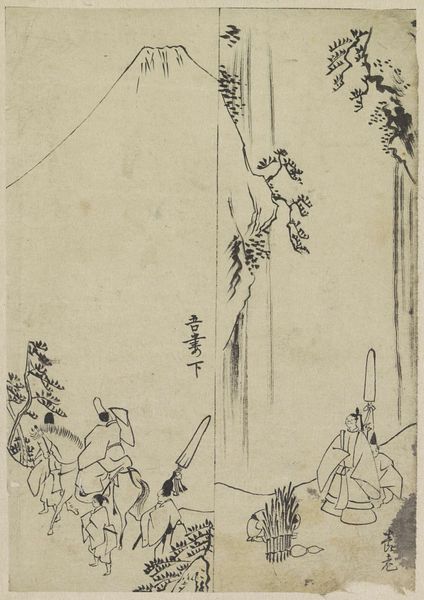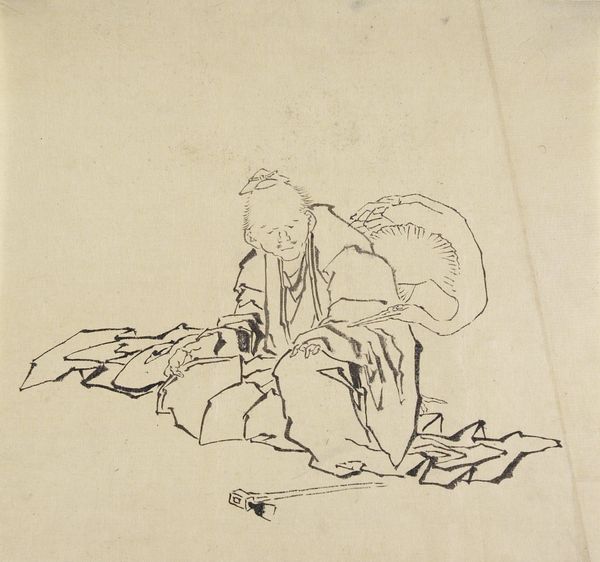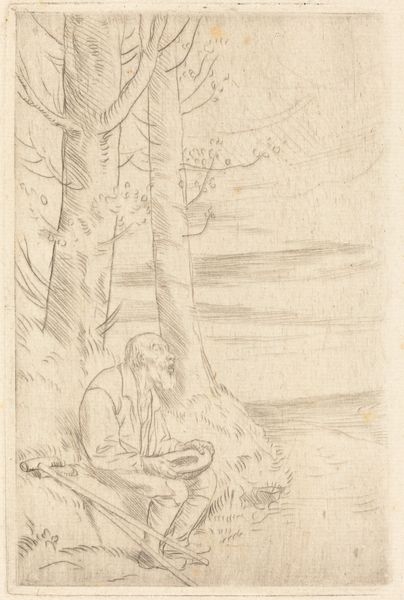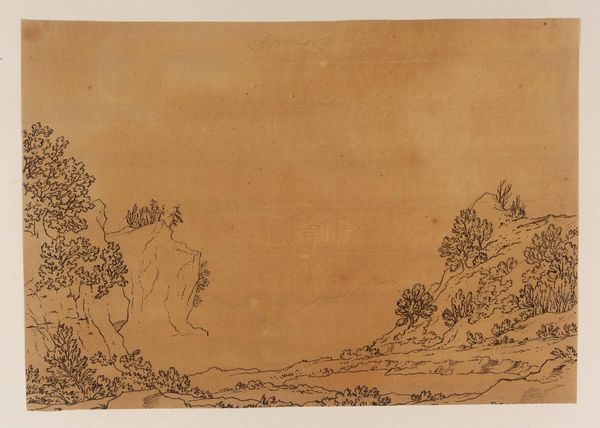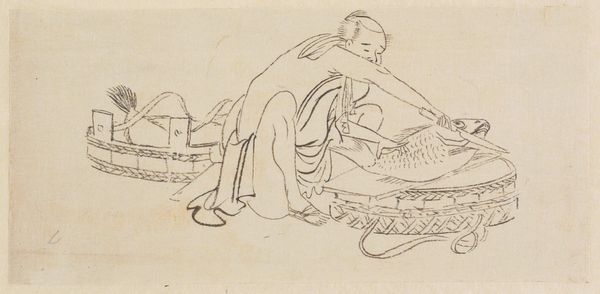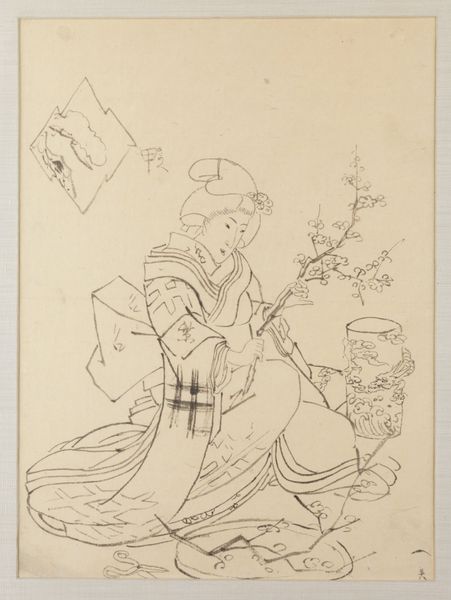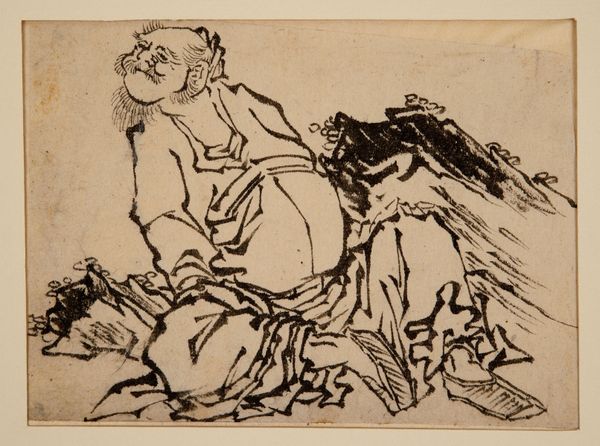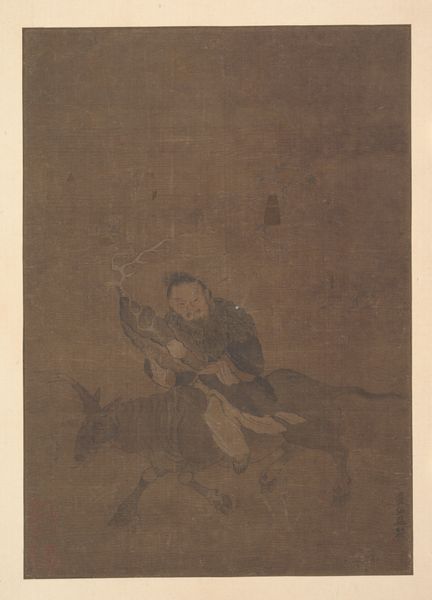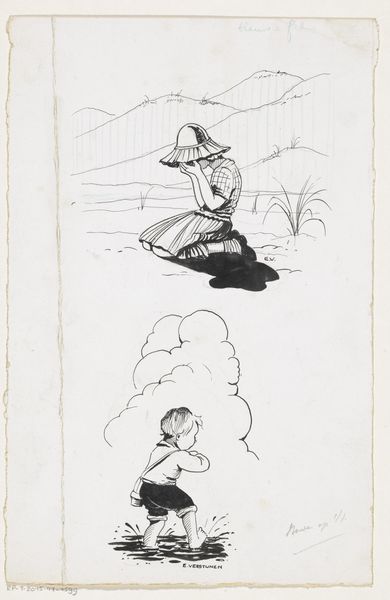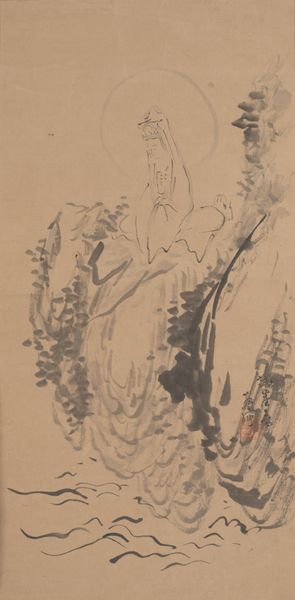
drawing, paper, ink
#
portrait
#
drawing
#
narrative-art
#
asian-art
#
landscape
#
ukiyo-e
#
figuration
#
paper
#
ink
Dimensions: 12 1/8 x 9 1/2 in. (30.8 x 24.2 cm) (image)12 3/4 x 10 1/2 in. (32.4 x 26.7 cm) (sheet)
Copyright: Public Domain
Katsushika Hokusai created this print, Priest, during the Edo period in Japan, a time marked by both artistic flourishing and rigid social hierarchies. Hokusai, known for his innovative approach to ukiyo-e, or woodblock prints, often explored themes that challenged the established norms. Here, the figure of the priest is rendered with a striking realism that departs from traditional idealized depictions. His intense gaze and weathered features speak to a life of contemplation and hardship. The beads, clutched tightly in his hands, suggest a moment of profound spiritual engagement. The surrounding landscape, sketched with sparse lines, evokes a sense of solitude and the sublimity of nature. Hokusai’s ability to capture both the physical presence and the inner world of his subject invites us to consider the complex relationship between individual identity, spiritual practice, and the natural world. How does this image, so clearly rooted in a particular time and place, speak to our own search for meaning and connection?
Comments
minneapolisinstituteofart almost 2 years ago
⋮
Prayer beads, or rosaries, are used in many religious traditions as aids for prayer and recitation. In this drawing by Hokusai, prayer beads are shown encircling the wrist of a Buddhist as he devotes himself to asceticisms near a waterfall. Buddhist practitioners use rosaries to count the repetitions of sacred texts and appeals. These rosaries are traditionally composed of 108 beads. Each bead represents a bonnō –a negative mental state such as jealousy or depression. Additionally, the number 108 holds astronomical significance as it is the product of the four phases of the moon and the twenty-seven constellations (4 x 27 = 108).
Join the conversation
Join millions of artists and users on Artera today and experience the ultimate creative platform.
